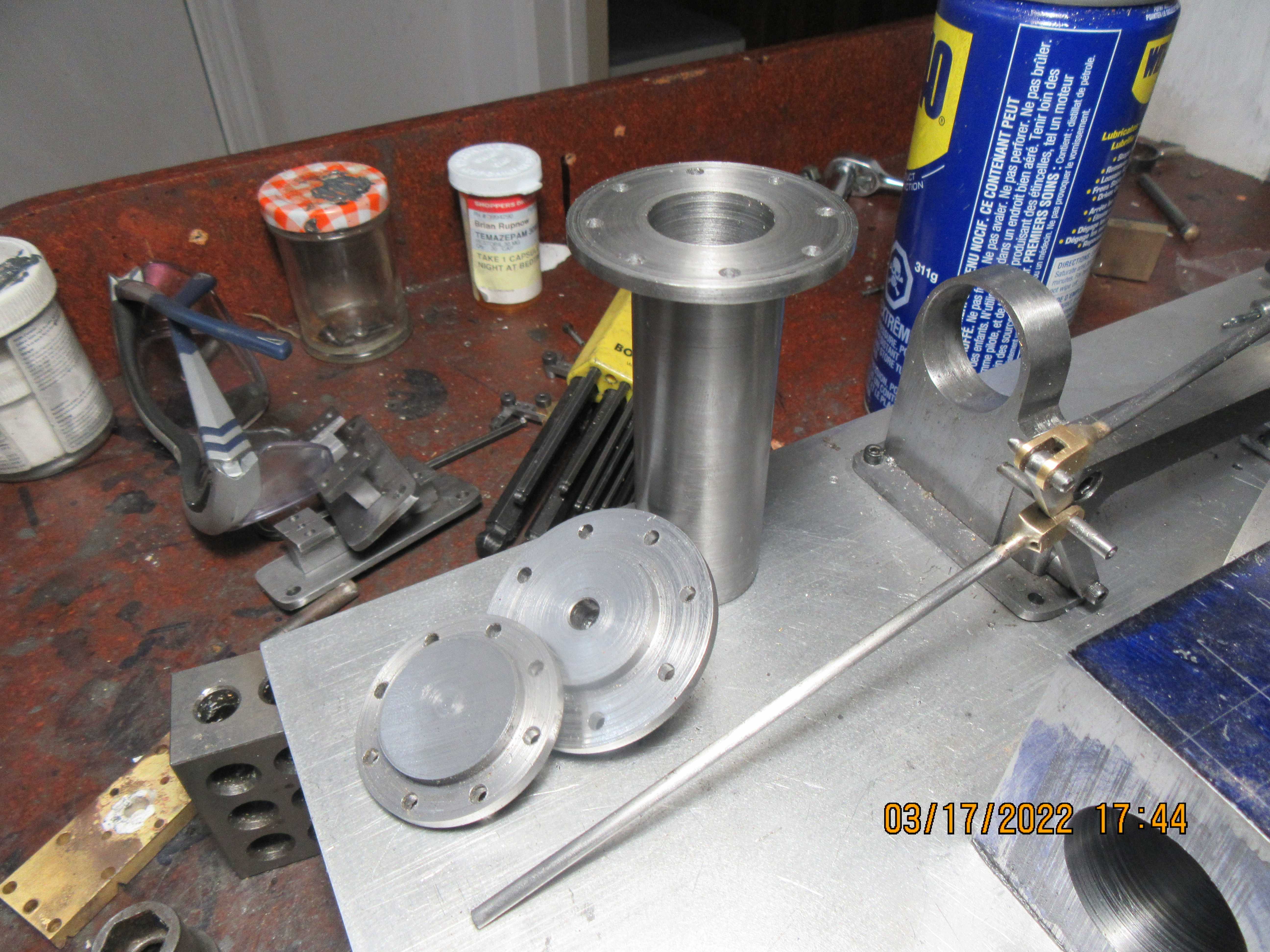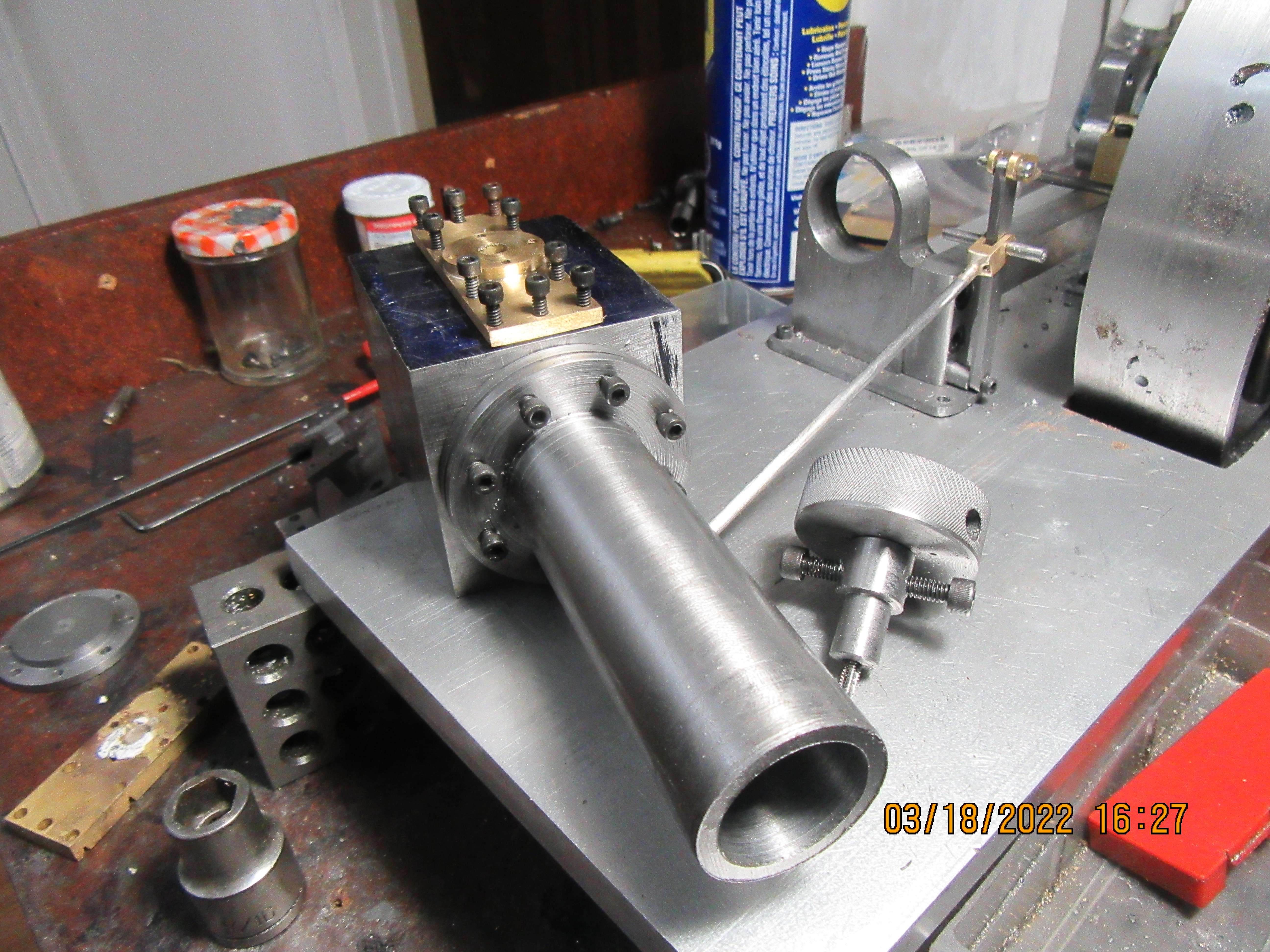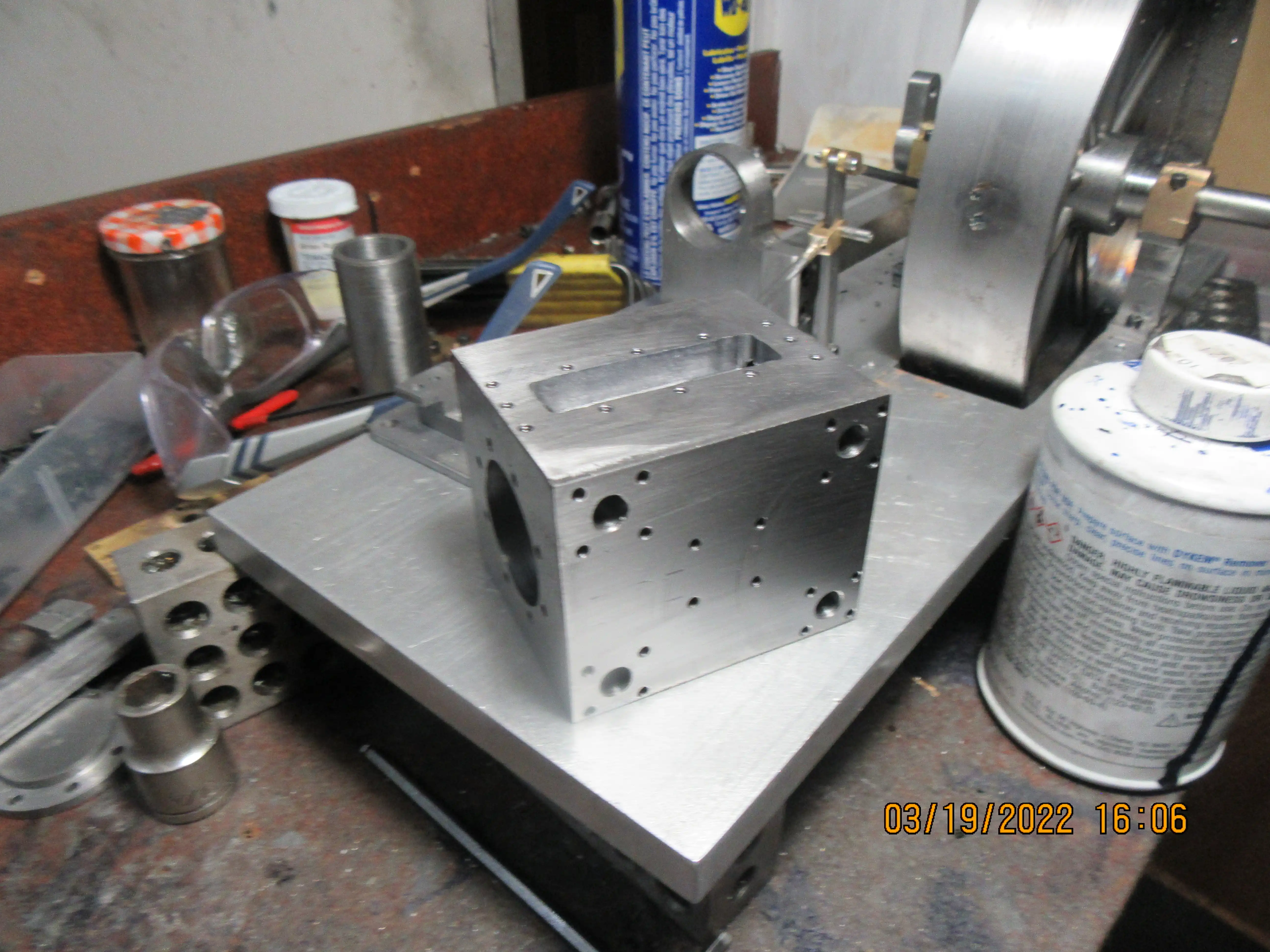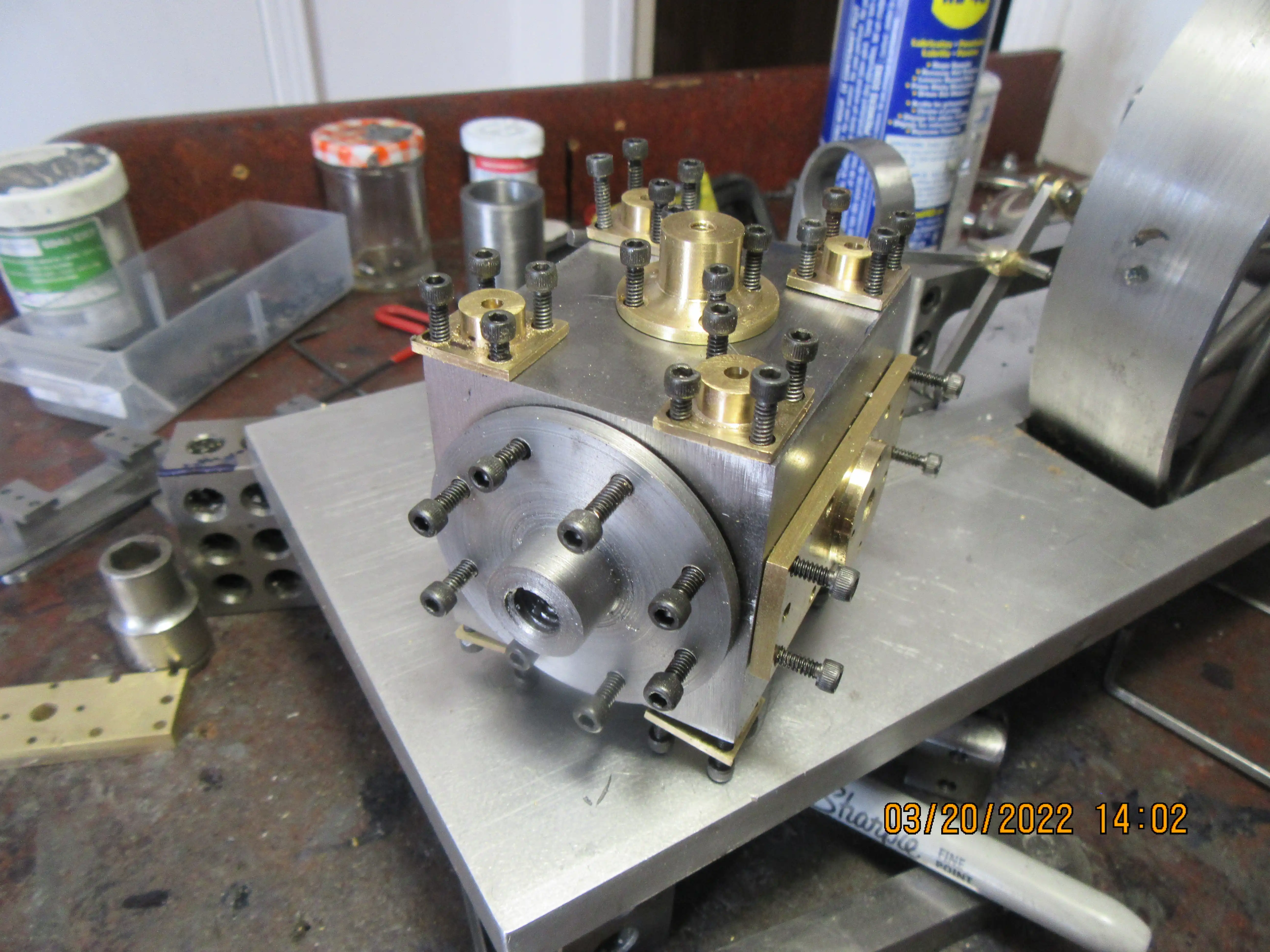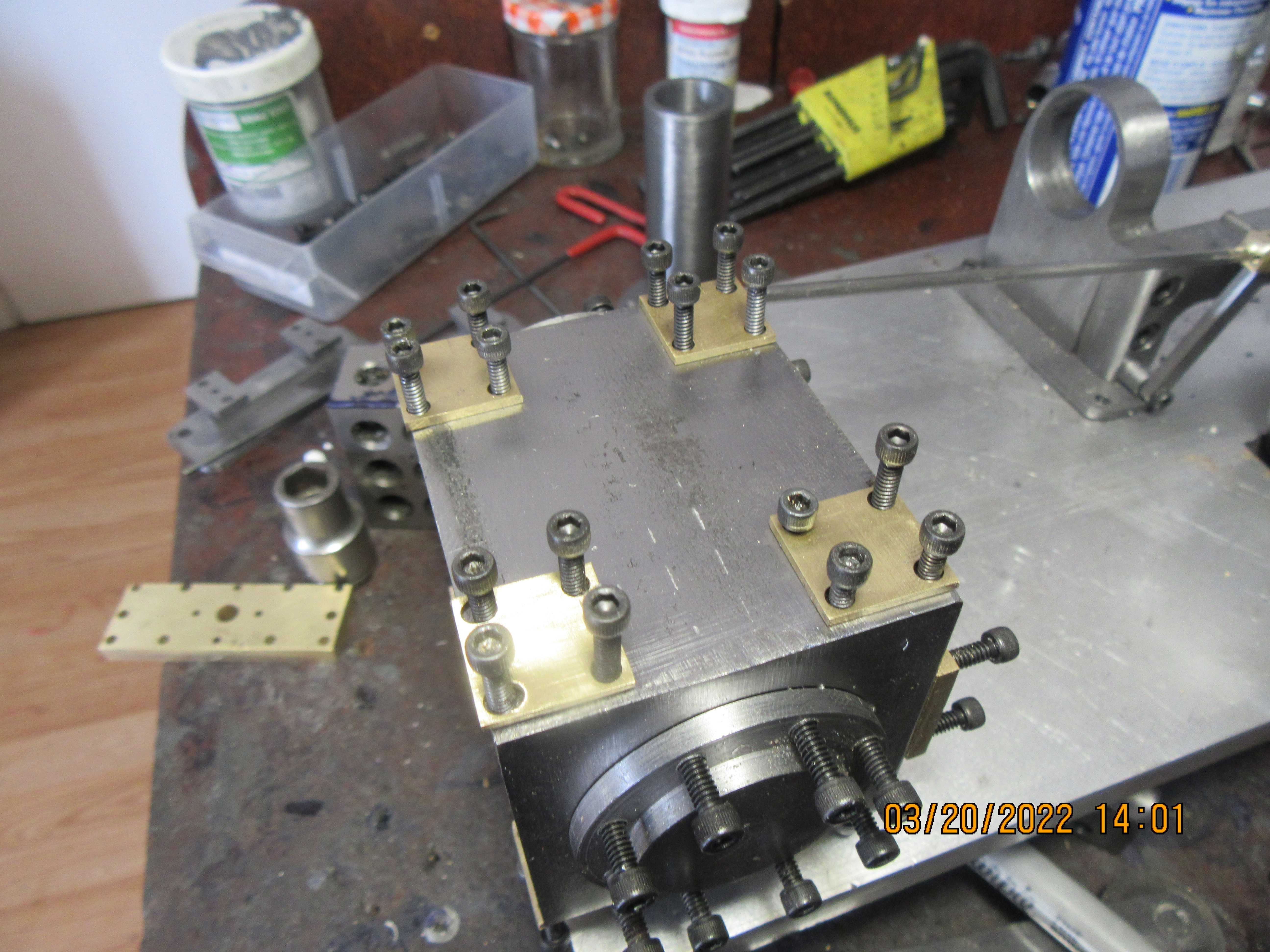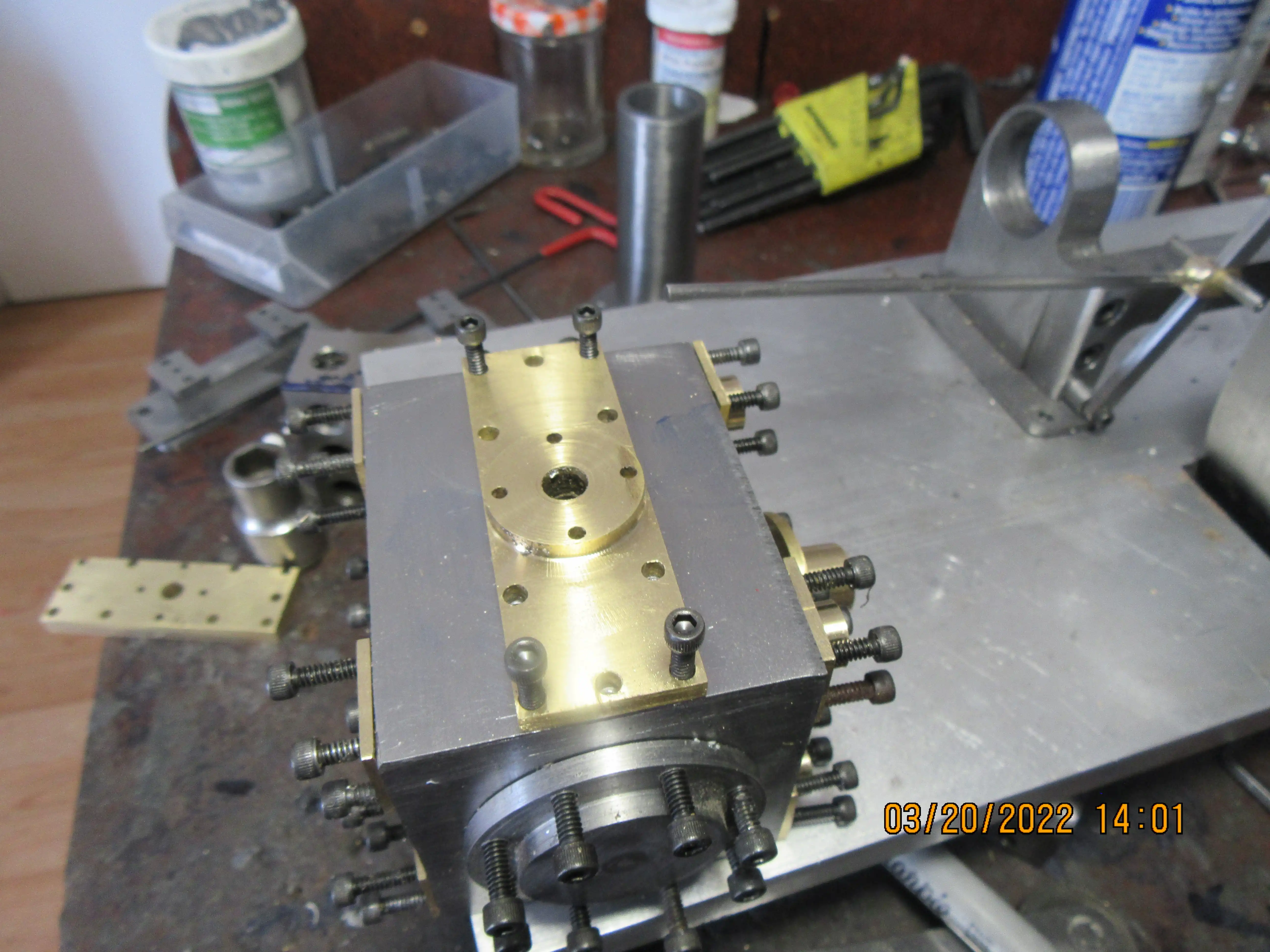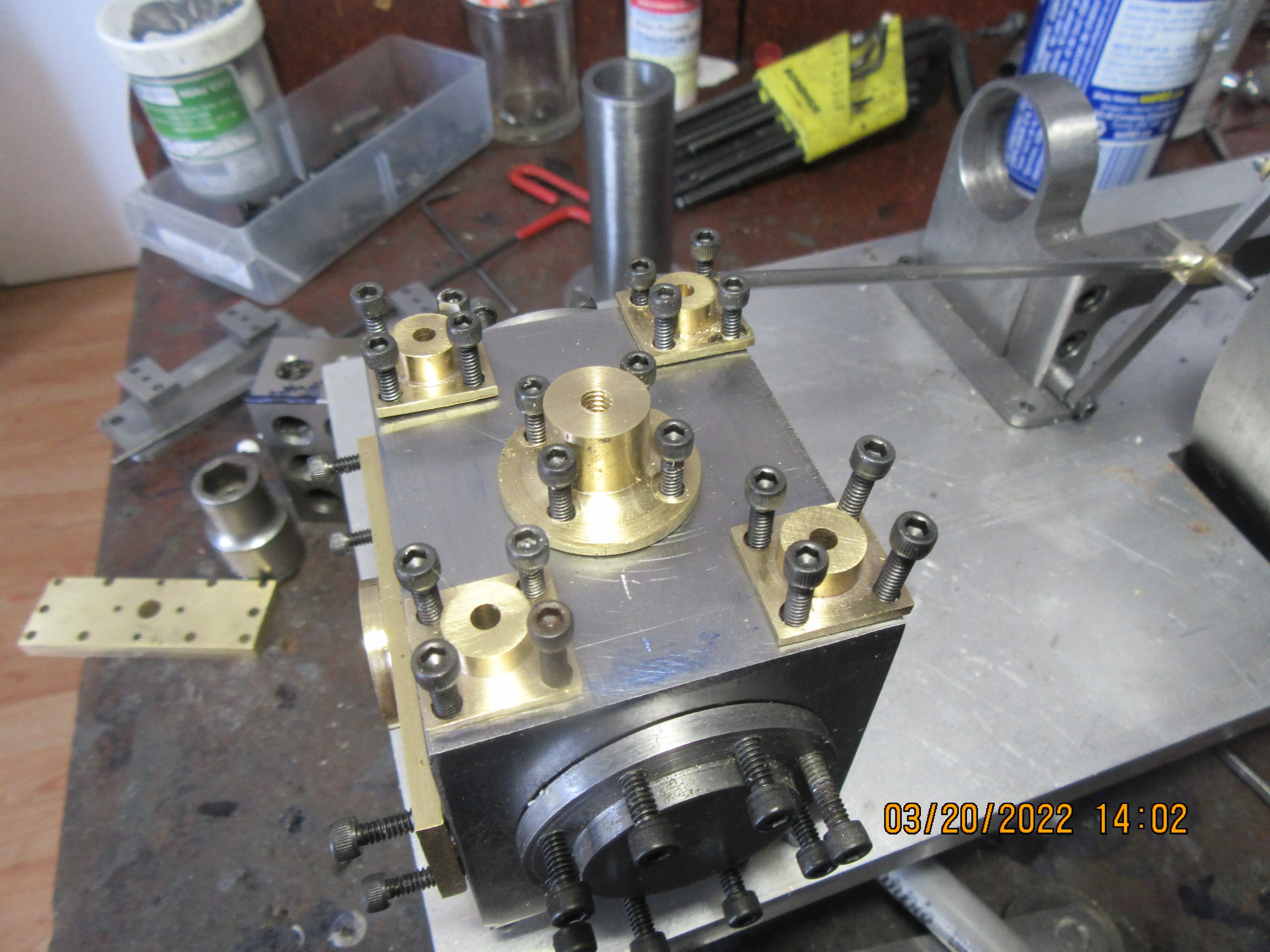Hi Charles, Brian, I like the discussion.
When I was a lad in a machine shop 55 years ago (a lot different from today's workplace!) I was taught a few things that I remember... One applies here.
Bolts have their place, so do studs and nuts.
Where you have something like a Cast iron cylinder block, the last thing you want to do is strip a thread. So threaded holes are relatively long, 2 to 2 1/2 D in length. Studs are fitted, so you do not "work" the thread in the cadt iron, while adding torque. Then the nuts are fitted (easily replaced if stripped), which, being of stronger steel than the cast iron, can take the load as the torque is applied (rotation between nut and stud). The nut of course, being twice as strong as the cast iron, shall only be 1 x D thick. So it strips before the cast iron thread is over stressed.
If anything goes awry with the stud, it will be on the outer thread, where the nut goes, so the stud can be removed and a new one fitted.
But every action is arranged to fit the stud in the cast iron block when not loaded. Thus protecting the cast iron thread from damage. It only sees the tensile load after it has full 2-D thread engagement, not while the load is being applied.
I am not sure how that logic applies (or not?) to Brian's steel cylinder and high tensile Allen bolts?...
But I happen to agree with Charles, that on a model of a period design, it looks better with studs and nuts.
But as long as you don't use slotted round headed screws, I would not complain anyway.
Thanks Gents,
K2
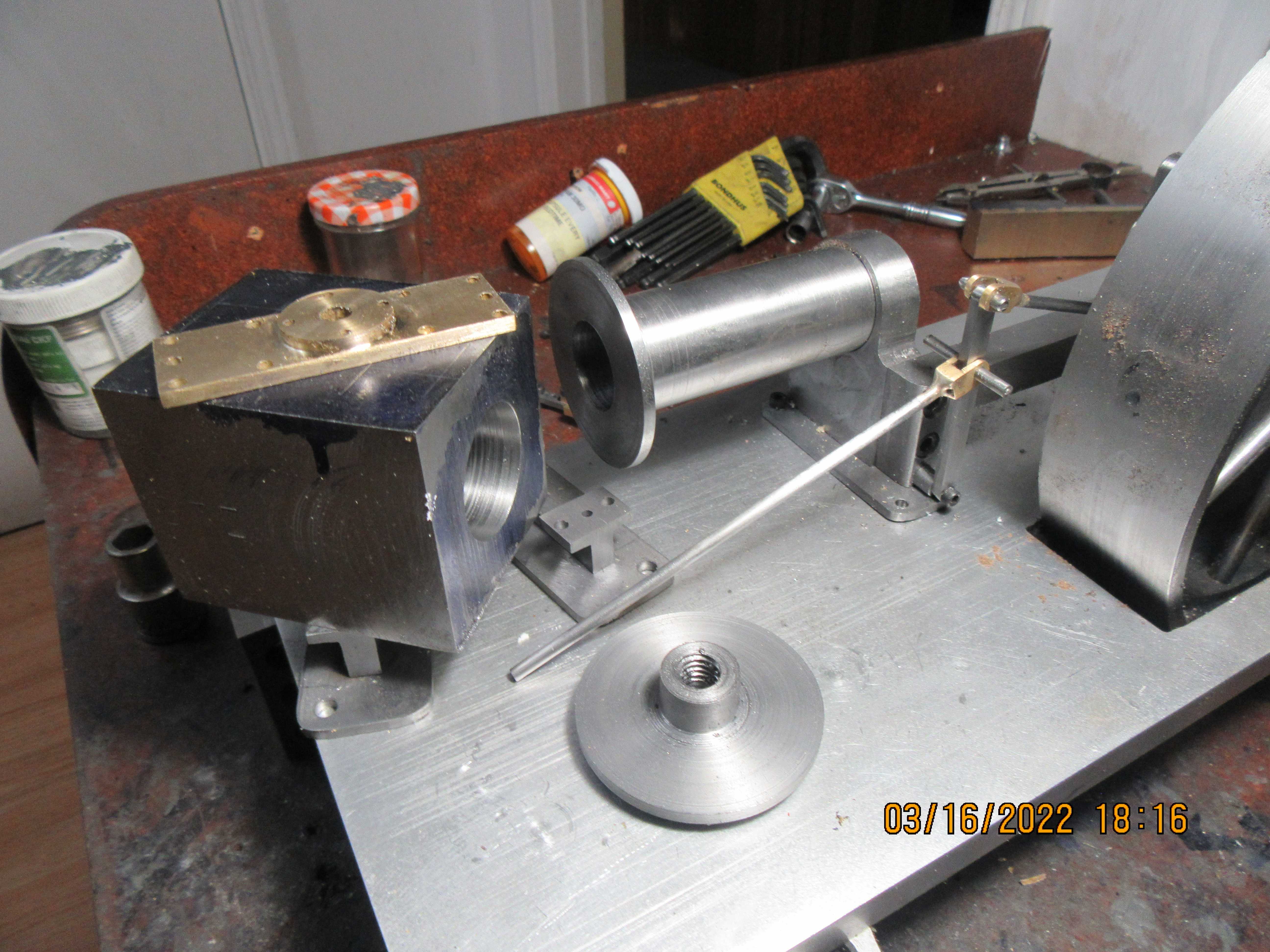

















![MeshMagic 3D Free 3D Modeling Software [Download]](https://m.media-amazon.com/images/I/B1U+p8ewjGS._SL500_.png)




















![DreamPlan Home Design and Landscaping Software Free for Windows [PC Download]](https://m.media-amazon.com/images/I/51kvZH2dVLL._SL500_.jpg)
























